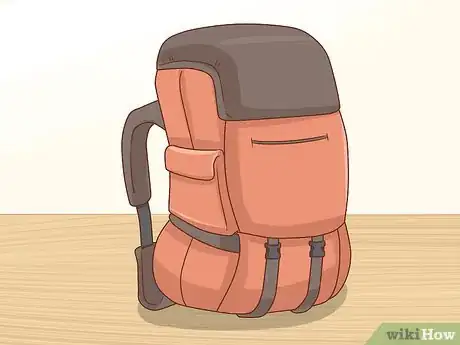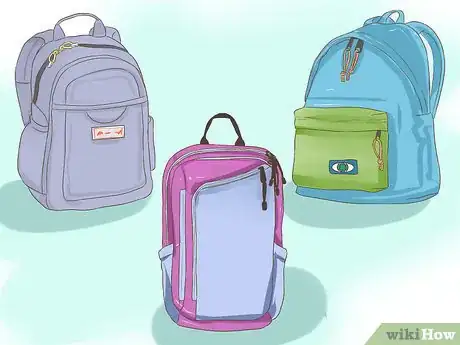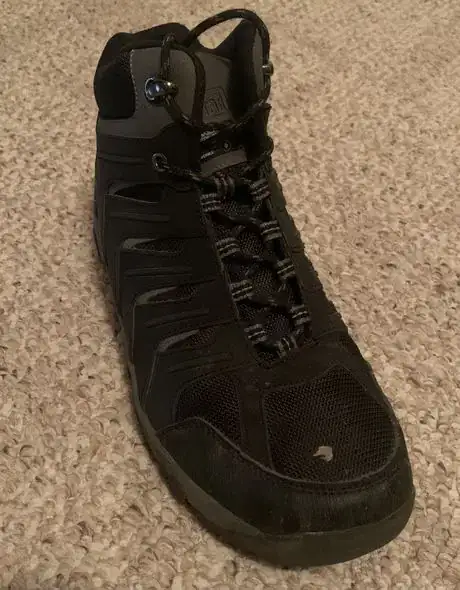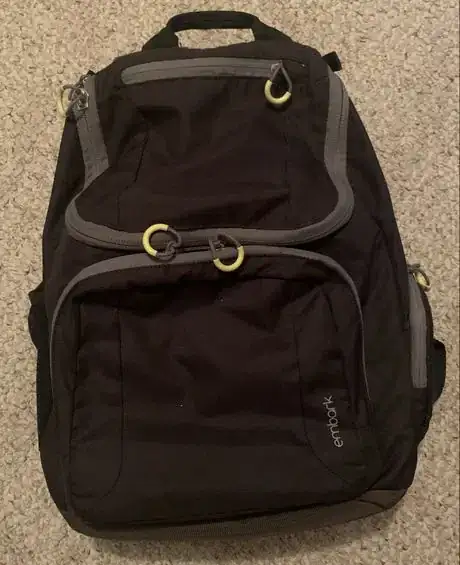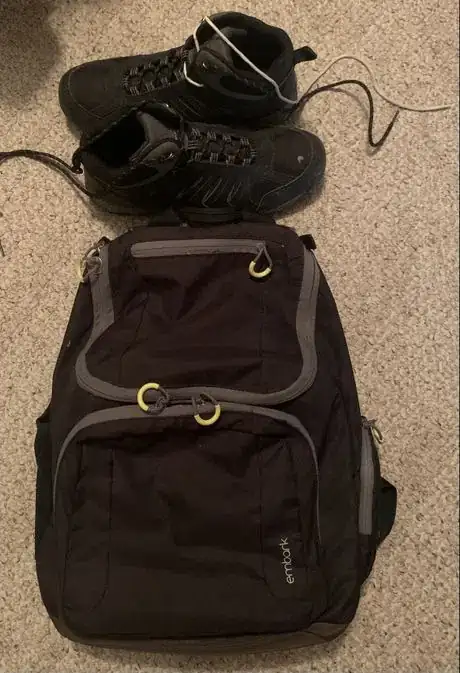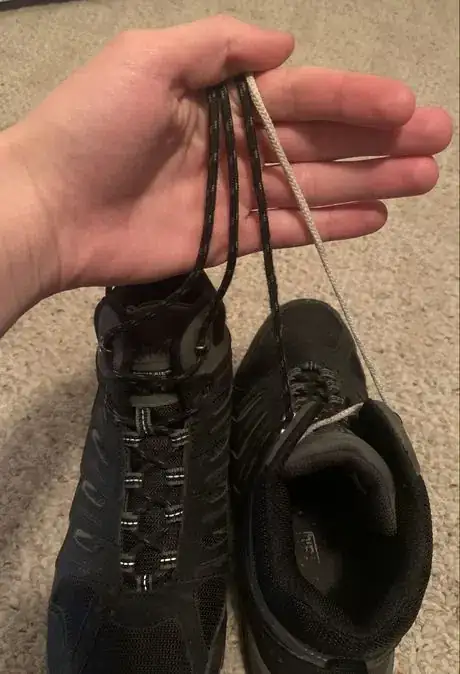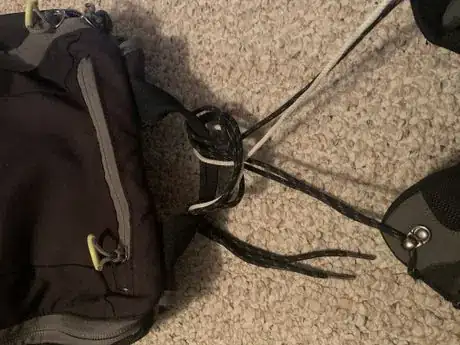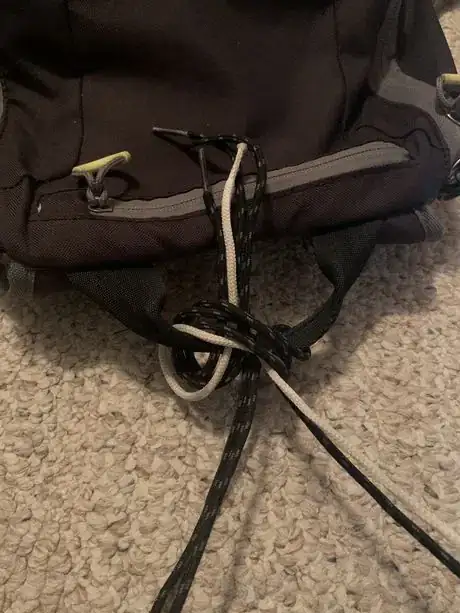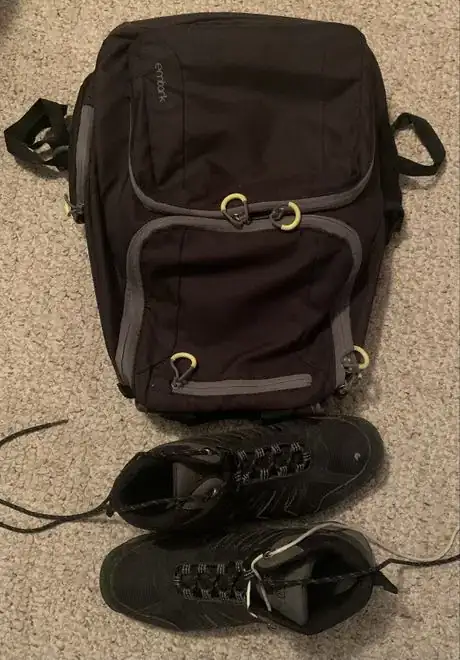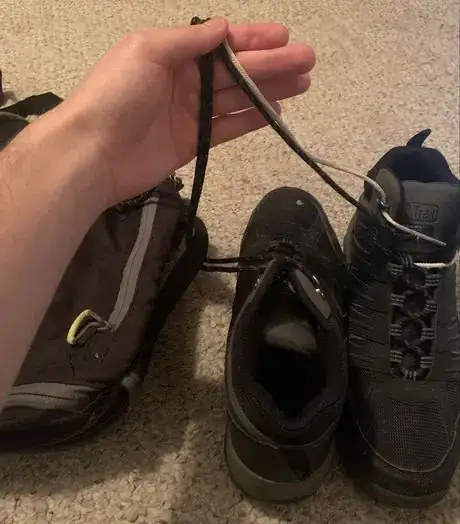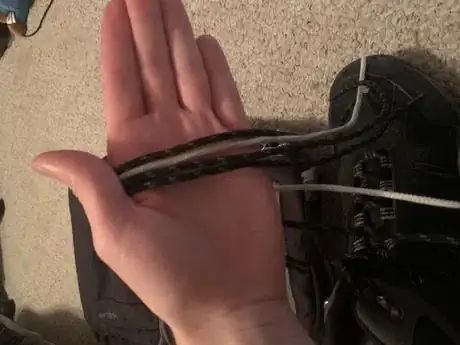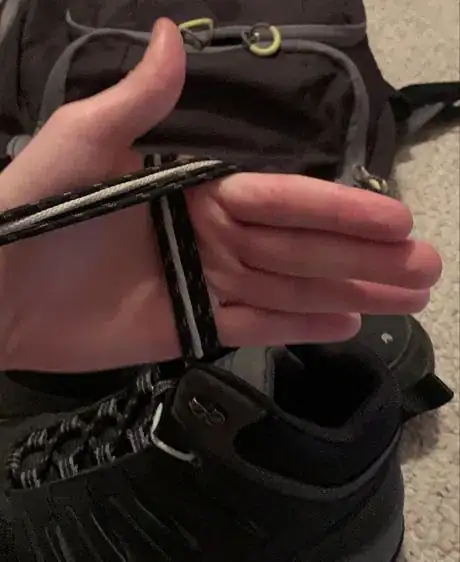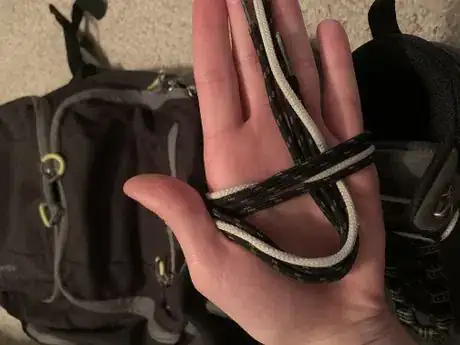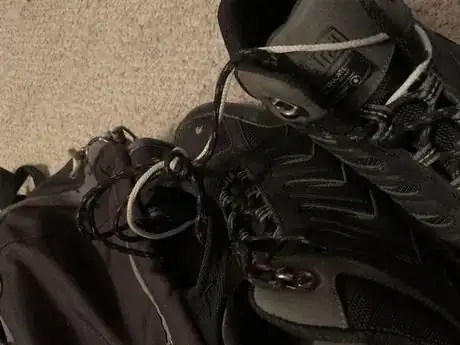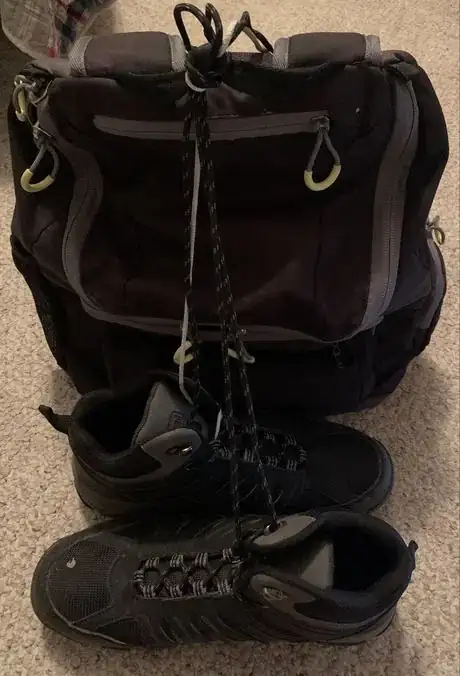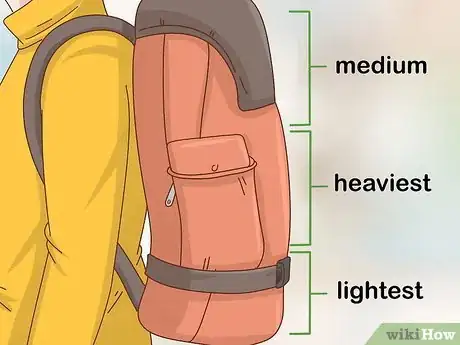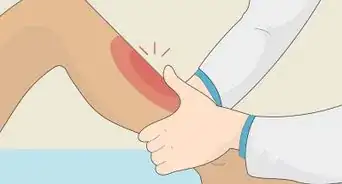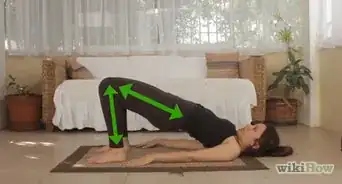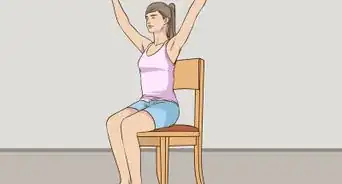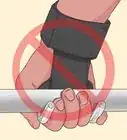This article was co-authored by Thomas Churchill. Thomas Churchill has been leading hiking and backpacking trips across California for the last five years as a Stanford Pre-Orientation Trip Leader and Adventure Program Guide. Most recently, Thomas was a Hiking Leader for 3 months at Stanford Sierra Conference Center, leading day hikes in the Desolation Wilderness of Northern California.
This article has been viewed 10,088 times.
Hiking is a great activity for getting some exercise and seeing the true beauty of nature. Going on a hike may require you to bring extra supplies, such as an extra pair of boots or shoes. In this article, you will learn a few efficient ways to tie this extra pair of footwear to your backpack. This method of doing so will ensure comfort and effectiveness.
Steps
Preparing and Identifying Supplies
-
1Obtain the specific backpack you will be using. There are multiple different styles of backpacks, such as the classic school backpack or a highly sophisticated hiking pack.
- Pick a backpack that will be suitable for the needs of your trip. For example, do not bring a big hiking pack for a day trail or don't bring a school backpack for a week-long trip.
-
2Assess where the shoes can be attached to. Analyze the backpack of your choice that will be used and observe where the laces can be run through securely.
- Simplistic backpacks have 3 main spots to tie shoes to, the handle or at the base of either shoulder strap.
- More sophisticated hiking backpacks, meant for longer, enduring hikes, may not offer the handle option. However, these backpacks do provide a wider range of possibilities to tie your shoes to, such as through a strap/band or a clip.
- Try securing your footwear to a clip or carabiner to hold it on the outside of your backpack.[1]
-
3Get the desired footwear you will be using. The footwear can be boots or shoes, both will work the same for the explanation throughout this article.
-
4Ensure that the shoes/boots are laced properly. This will allow the method to work well in order to tie them to the backpack.
- The laces should pass through every loop and binding on the boot.[2]
Using a Clove Hitch Knot
Performing the following method will be based on tying the shoes through the handle of the backpack.
-
1Lay the backpack down on the ground with the zippers and pockets facing up.
-
2Position the shoes to be next to each other, toe to heel.
-
3Take all 4 laces in your hand together.
-
4Put the laces through the top of the handle.
- Pull laces enough to leave 6 inches of lacing between the start of the laces on the shoe to the handle.
-
5Loop the laces around the handle.
- Keep the ends of the laces on the outside of the loop.
-
6Put the laces through the handle again now on the other side of the handle.
-
7Pull the laces through the hoop created.
-
8
Using a Stopper Knot Alternative Knot
-
1Align both shoes in front of the backpack. Have the shoes next to each other in a heel-to-toe placement.
-
2Pull both of the shoelaces on the right shoe through the handle.
-
3Merge the shoelaces on the left shoe with the right shoelaces. You should end up with all 4 laces side by side.
- Note that these laces from the left shoe should not go through the handle as the right laces did. They should stay outside the handle.
- Choke up on the laces as much as possible. This will allow for more lace slack to work with and have the shoes rest near your mid-back once completed.
-
4Wrap all 4 laces around your hand. Start with the laces coming from the bottom of your left hand on the backside and bring them to the top.
-
5Wind the laces around the backside of your hand.
- Have the laces come from the bottom of the back of your hand and go over the top of your hand to the front of it. This is the type of winding motion you want.
-
6Tuck the laces under the laces from the first loop.
-
7Guide the laces over the first wrap around to the opposite side.
-
8Bring the laces between your hand and the other lace wrap and pull through.
-
9Pull tightly to secure the knot.
- Place the slack laces in between the shoes and the backpack to avoid them flopping around
- This knot provides high security for your shoes. This knot will not come undone easily and will provide a sense of safety for your shoes. [5]
Placing Footwear on the Backpack
-
1Place the shoes on the back of your backpack once the knot is completed. By putting the shoes in this position, it will significantly reduce the swaying effect you may feel if you were to have them hang loosely on both sides.
- Remember to maintain the heel to toe shoe positioning
- The reason for this is to distribute the weight evenly across your backpack/body.[6]
- Use straps or bungee cords to strap your footwear down so it will stay firmly in place while you're hiking. If your backpack has outer pockets or flaps, you can also tuck the boots into that.
-
2Check that shoes are not hanging too far down your backpack when wearing it. If the shoes hang too far down your backpack, this will make you feel as if the shoes are pulling you down or holding you back.
- The best placement for your shoes to hang is at your mid-back. If the shoes are at your mid-back, this will eliminate the pulling effect you may feel and reduce, if not eliminate, soreness in your lower back.[7]
Expert Q&A
-
QuestionHow should I lace my hiking boots?
 Thomas ChurchillThomas Churchill has been leading hiking and backpacking trips across California for the last five years as a Stanford Pre-Orientation Trip Leader and Adventure Program Guide. Most recently, Thomas was a Hiking Leader for 3 months at Stanford Sierra Conference Center, leading day hikes in the Desolation Wilderness of Northern California.
Thomas ChurchillThomas Churchill has been leading hiking and backpacking trips across California for the last five years as a Stanford Pre-Orientation Trip Leader and Adventure Program Guide. Most recently, Thomas was a Hiking Leader for 3 months at Stanford Sierra Conference Center, leading day hikes in the Desolation Wilderness of Northern California.
Hiking & Backpacking Trip Leader Your laces should fit snugly and pass through every loop and binding on the boot. For a snug fit, cross your laces over one another several times as you approach your ankle and calf, creating multiple X shapes. Then, use the metal rungs to pull the laces tight at the top of the boot. This will help you avoid blisters while you're hiking.
Your laces should fit snugly and pass through every loop and binding on the boot. For a snug fit, cross your laces over one another several times as you approach your ankle and calf, creating multiple X shapes. Then, use the metal rungs to pull the laces tight at the top of the boot. This will help you avoid blisters while you're hiking. -
QuestionWhy should I tie my boots tightly to my backpack?
 Thomas ChurchillThomas Churchill has been leading hiking and backpacking trips across California for the last five years as a Stanford Pre-Orientation Trip Leader and Adventure Program Guide. Most recently, Thomas was a Hiking Leader for 3 months at Stanford Sierra Conference Center, leading day hikes in the Desolation Wilderness of Northern California.
Thomas ChurchillThomas Churchill has been leading hiking and backpacking trips across California for the last five years as a Stanford Pre-Orientation Trip Leader and Adventure Program Guide. Most recently, Thomas was a Hiking Leader for 3 months at Stanford Sierra Conference Center, leading day hikes in the Desolation Wilderness of Northern California.
Hiking & Backpacking Trip Leader If your boots are swinging around, they'll create extra air resistance when you're walking, and they'll be more of a nuisance.
If your boots are swinging around, they'll create extra air resistance when you're walking, and they'll be more of a nuisance. -
QuestionHow should I pack for a backpacking trip?
 Thomas ChurchillThomas Churchill has been leading hiking and backpacking trips across California for the last five years as a Stanford Pre-Orientation Trip Leader and Adventure Program Guide. Most recently, Thomas was a Hiking Leader for 3 months at Stanford Sierra Conference Center, leading day hikes in the Desolation Wilderness of Northern California.
Thomas ChurchillThomas Churchill has been leading hiking and backpacking trips across California for the last five years as a Stanford Pre-Orientation Trip Leader and Adventure Program Guide. Most recently, Thomas was a Hiking Leader for 3 months at Stanford Sierra Conference Center, leading day hikes in the Desolation Wilderness of Northern California.
Hiking & Backpacking Trip Leader Try to bring light clothing—avoid packing jeans or other heavy items. Always keep your heaviest items toward the center of your pack, as that will help the weight be distributed evenly. Also, try to stuff items down into your pack to get rid of any air pockets. Finally, traveling in groups will allow you to distribute group gear more efficiently, which will make your packs collectively lighter.
Try to bring light clothing—avoid packing jeans or other heavy items. Always keep your heaviest items toward the center of your pack, as that will help the weight be distributed evenly. Also, try to stuff items down into your pack to get rid of any air pockets. Finally, traveling in groups will allow you to distribute group gear more efficiently, which will make your packs collectively lighter.
References
- ↑ Thomas Churchill. BA in International Relations, Stanford University. Expert Interview. 4 March 2019.
- ↑ Thomas Churchill. BA in International Relations, Stanford University. Expert Interview. 4 March 2019.
- ↑ Thomas Churchill. BA in International Relations, Stanford University. Expert Interview. 4 March 2019.
- ↑ https://www.sailmagazine.com/diy/seven-essential-knots-for-sailors#:~:text=The%20most%20secure%20knot%20for%20doing%20this%20is,is%20by%20using%20your%20hand%20as%20a%20form
- ↑ https://www.sailmagazine.com/diy/seven-essential-knots-for-sailors#:~:text=The%20most%20secure%20knot%20for%20doing%20this%20is,is%20by%20using%20your%20hand%20as%20a%20form
- ↑ https://outdoorcommand.com/how-to-attach-sleeping-bag-to-backpack/
- ↑ https://gearjunkie.com/how-to-pack-a-backpack
